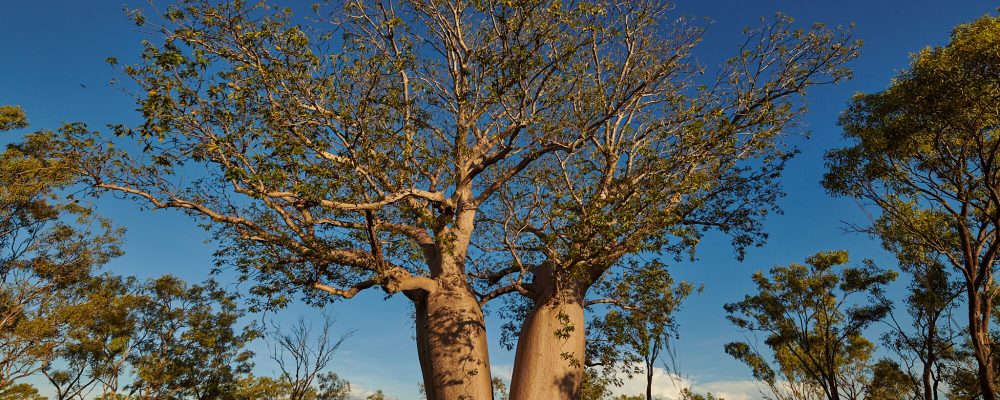The ‘Building Indigenous Capacity in Culture, Tourism and Conservation Economies’ project investment is supported by funding from the Western Australian Government’s State Natural Resource Management Program.
The Boab is a sacred tree.
It was carried and propagated by the ancestors of Kimberley Aboriginal people. Martuwarra (Fitzroy River) is a National Heritage Listed area.
It is the largest registered Aboriginal cultural heritage site in WA. The boabs of Martuwarra are iconic to the region.
They hold deep cultural, spiritual, environmental, and economic significance.
Climate change is already killing baobabs in Africa.
Increasing tides, shifting water tables and temperature change could impact our boabs and their ecosystems…

Why a project about Boabs?
Boabs, Adansonia gregorii, are keystone species, Indigenous to Australia and occur mainly in the Kimberley, with a small pocket in the NT. No-one in the Kimberley needs to be told how special Boabs are. Their distinct gnarled trunks punctuate the northern savannah. Aboriginal people have propagated and harvested these trees for thousands of years. Their uses include nut carving, food, water and medicine, and the cultural significance of the Kimberley Boabs cannot be overstated. Boabs are now sought as a premium ‘super food’. Half of the world’s eight boab species are marked endangered on the International Union Conservation Nature (IUCN) Red List. Never have boabs faced such intense human development pressures. We need informed decision making to protect the ‘Tree of Life’. We must combine Indigenous, traditional knowledge practices with western science. We must also promote environmental stewardship and community-based resource management.

The Project
Research is crucial to preserving Australia’s rich ecological heritage for generations to come. There is an alarming lack of information regarding the hydrology and habitats that sustain Boabs.
Our Boab project is a unique partnership between Traditional Owners and Western scientists to gather critical information on the mighty Boab.
The Pandanus Park Boab team volunteer monthly to monitor and record changes in water tables of various sites.
Pandanus Park Women as science volunteers
In March 2021 a workshop was held at Pandanus Park, introducing the community to the Project. There are now a group of community citizen science volunteers who monitor and record the water table monthly.
This project will provide vital valuation data. It aims to fill an existing knowledge gap in relation to the economic value of environmental (biodiversity and eco-system) services on Country. It is expected to position riverside communities to succeed in the broader economic development of their land.
Three women were awarded scholarships in late September to attend the Australian Association of Environmental Education in Mandurah. Tegan Riley, Elaine Riley, Kaitlyn Buaneye (pictured).

Where to next?
There are many conservation, science, and cultural tourism opportunities along Martuwarra.
We are working towards sharing the River globally, creating export-quality experiences and economically sustainable livelihoods for Traditional Owners. This will provide stories and experiences that showcase and promote the Fitzroy River as a globally unique riverine system.
